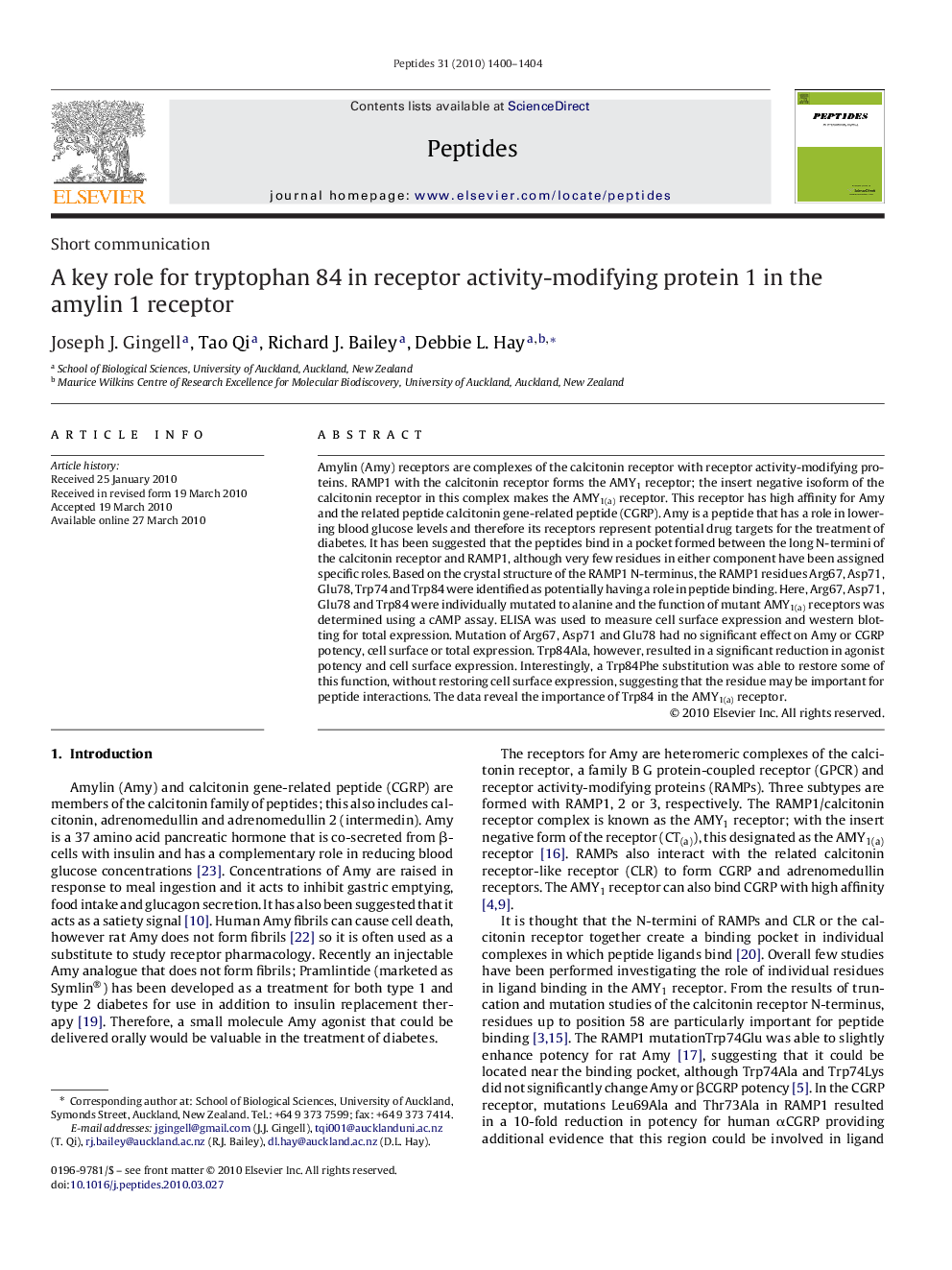| Article ID | Journal | Published Year | Pages | File Type |
|---|---|---|---|---|
| 2006634 | Peptides | 2010 | 5 Pages |
Amylin (Amy) receptors are complexes of the calcitonin receptor with receptor activity-modifying proteins. RAMP1 with the calcitonin receptor forms the AMY1 receptor; the insert negative isoform of the calcitonin receptor in this complex makes the AMY1(a) receptor. This receptor has high affinity for Amy and the related peptide calcitonin gene-related peptide (CGRP). Amy is a peptide that has a role in lowering blood glucose levels and therefore its receptors represent potential drug targets for the treatment of diabetes. It has been suggested that the peptides bind in a pocket formed between the long N-termini of the calcitonin receptor and RAMP1, although very few residues in either component have been assigned specific roles. Based on the crystal structure of the RAMP1 N-terminus, the RAMP1 residues Arg67, Asp71, Glu78, Trp74 and Trp84 were identified as potentially having a role in peptide binding. Here, Arg67, Asp71, Glu78 and Trp84 were individually mutated to alanine and the function of mutant AMY1(a) receptors was determined using a cAMP assay. ELISA was used to measure cell surface expression and western blotting for total expression. Mutation of Arg67, Asp71 and Glu78 had no significant effect on Amy or CGRP potency, cell surface or total expression. Trp84Ala, however, resulted in a significant reduction in agonist potency and cell surface expression. Interestingly, a Trp84Phe substitution was able to restore some of this function, without restoring cell surface expression, suggesting that the residue may be important for peptide interactions. The data reveal the importance of Trp84 in the AMY1(a) receptor.
